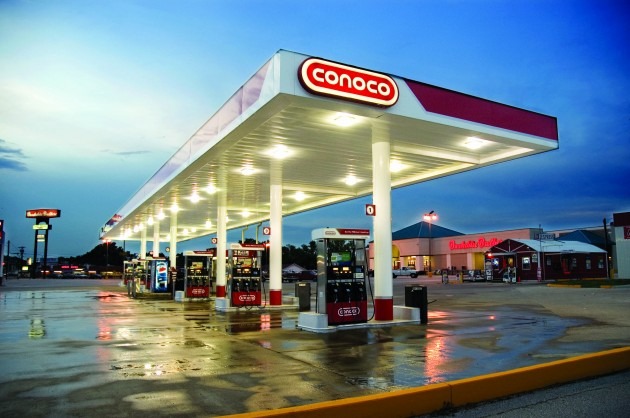
Pursuing Black Gold in Somalia
The following cables demonstrate how the oil companies were pursuing Somali crude, and some of the difficulties they encountered along the way.
1. “Chevron Drilling Site in Northern Somalia.” Cable from US Embassy in Djibouti to State Department Headquarters. 31 March 1988. Cable Number: Djibouti 0711. Source: Freedom of Information Act release (2006-01-288) to Keith Yearman. This cable refers to Chevron’s operations in Somalia. “Chevron Oil has begun exploratory drilling at the first of two sites in northern Somalia…Another Chevron employee, a Somali-born US citizen…believes the [Somaliland National Movement] has taken a firm descision not [repeat] not to harass the oil operation in any way. The SNM believes the oil (which Somalis and Djiboutians apparently are convinces is present in major quantities) should be exploited for the benefit of the Somali people, particularly in the north. From a technical standpoint, that can only take place in the 1990’s, when Siad Barre – and presumably his government – is gone…He believes many of the alleged terrorist incidents in northern Somalia were really the work of the soldiers themselves. Ill-fed and frequently unpaid because of the corruption…these soldiers often exaggerate and sometimes create, boming incidents and firefights in order to be able to justify more support from Mogadishu.”
2. “FY-88 Security Assistance Funding Trips Up Military Review Committee (MRC) Meeting.” Cable from US Embassy in Mogadishu to State Department Headquarters. 2 February 1988. Cable Number: Mogadishu 01297. Source: Freedom of Information Act release (2006-01-288) to Keith Yearman. This cable is an overview of US-Somali military cooperation. While important militarily, the last page mentions “the capture of 2 dissidents [and the pursuit of] 3 others whose objective had been to sabotage U.S. oil drilling activities. [Somali Defense Minister Aden Abdullahi Nur] attributed their training and support to Ethiopia and claimed the goal was to close down the exploratory drilling by Conoco along the Gulf of Oman. Embassy will attempt to corroborate this report.”
3. “Conversation with Outgoing Japanese Ambassador.” Cable from US Embassy in Mogadishu to State Department Headquarters. 6 February 1989. Cable Number: Mogadishu 01519. Source: Freedom of Information Act release (2006-01-288) to Keith Yearman. This short cable provides an overview of Japan’s relationship with Somalia, from rehabbing Somali radio stations to opening a new embassy. Of note, “Nippon Mining (Kyoto) has invested in shares of the Conoco Oil exploration project in northern Somalia, on a strictly financial basis.”
4. “Travel Restrictions.” Cable from US Embassy in Mogadishu to State Department Headquarters. 11 March 1990. Cable Number: Mogadishu 02441. Source: Freedom of Information Act release (2006-01-288) to Keith Yearman. Ambassador Frank Crigler’s travel had been restricted by the Somali government. During a March 7, 1990 telephone conversation, the Prime Minister guaranteed Crigler free travel. Crigler chose to “test” this policy by visiting Conoco’s site at Las Anod.
5. “Winds of Peace Blowing Even in Northwest Somalia.” Cable from US Embassy in Mogadishu to State Department Headquarters. 15 March 1990. Cable Number: Modgadishu 02658. Source: Freedom of Information Act release (2006-01-288) to Keith Yearman. Crigler’s report on his trip to the Conoco site. Most of the cable is dedicated to security issues, however Crigler noted: “Northwest Somalia’s ace-in-the-hole may be oil. Conoco has spent dols. 16 million drilling near Las Anod, with no results so far (at 9800 feet) but they remain optimistic.”
6. “Somalia Summary, Number 10 of 1990.” Cable from US Embassy in Mogadishu to State Department Headquarters. 12 April 1990. Cable Number: Mogadishu 03595. Source: Freedom of Information Act release (2006-01-288) to Keith Yearman. This overview of Somali events mentions Conoco’s abandonment of its first well near Las Anod. “After repeated difficulties they managed to reach a depth of 10,750 feet before losing a portion of the drill string down the hole. Conoco Somalia President Raymond Marchand and his colleagues are disappointed that they were not able to explore potential source rock to a depth of 14,300 feet.”
7. “Official Informal No. 021. Minister of Minerals and Water Resources Memcon.” Cable from US Embassy in Mogadishu to State Department Headquarters. 9 October 1990. Cable Number: Mogadishu 08737. Source: Freedom of Information Act release (2006-01-288) to Keith Yearman. This cable reports on Ambassador James K. Bishop’s meetng with Abdirizak A. Elmi, Minister of Minerals and Water Resources. “The Minister indicated that he enjoys doing business with the American companies searching for petroleum in Somalia. He spoke favorably of several of their local representatives. Due to depart for meetings with the [International Bank for Reconstruction and Development] in a few days, the Minister plans to visit Houston, where he has appointments with Conoco and Pectin. Noting the bullish attitude of the American companies, Elmi said they all want the Hargesia exploration concession, as their geologists have concluded that it is the most likely site for a substantial find.”
To be continued…………..next week